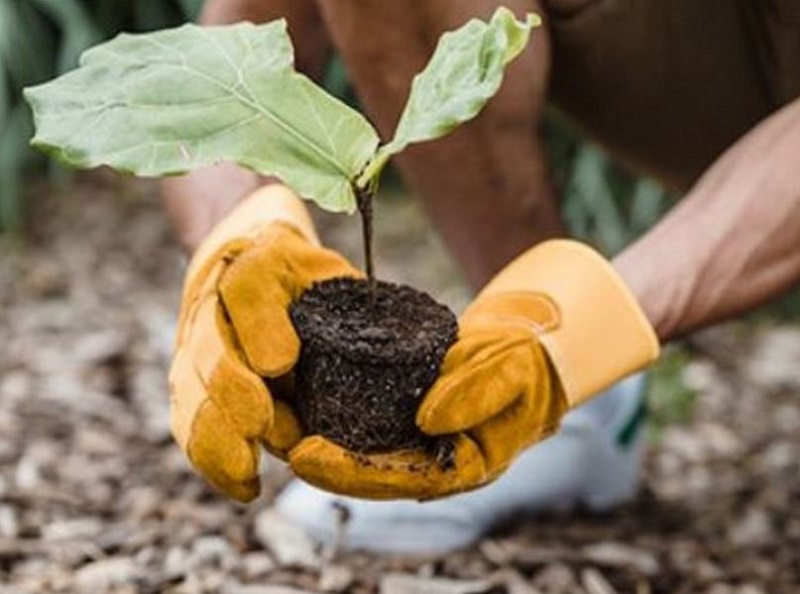
New Delhi: Uttarakhand has witnessed a 54 per cent decline in the area under horticulture production in the last six years till 2023, research showed, partially attributing the change to global warming.
The decline in area under horticulture production also coincides with the declining yields of major fruit crops in the state.
As per Climate Trends, an environment research and consulting organization, the total yield of fruits has reduced by 44 per cent from 662847.11 metric tonnes in 2016-17 to 369447.3 metric tonnes in 2022-23.
Meanwhile, the total area has shrunk to 81692.58 hectares in 2022-23, a sharp 54 per cent dip from 2016-17 (177323.5 hectares), the Climate Trends shows citing the Department of Horticulture, Government of Uttarakhand. Warming can partly explain these profound changes in horticulture production, the Climate Trends said.
The Climate Trends mentioned that shifts in temperature patterns directly impact fruit growth, development, and overall productivity.
"Higher temperatures can also pose challenges such as heat stress, reduced water availability, and altered precipitation patterns, negatively affecting yields. Additionally, changing temperature regimes can influence the prevalence and distribution of pests and diseases in fruits, necessitating adaptation through pest management strategies," the organization said.
Meanwhile, Dr Subash Nataraja, Head, Division of Agricultural Physics, ICAR-IARI, New Delhi also expressed concern over these trends.
"The short-term variability and trends in temperature are worrying and there is a need to study the long-term trends in weather variables and its relation to yield, especially, its relation with any change in crop/cropping pattern or shift in crop/cropping pattern," Nataraja said.
Cultivated in the higher altitudes of the Himalayas, temperate fruits like pear, apricot, plum, and walnut have seen the maximum fall in production. Apples and lemons have been moderately hit, as per the analysis.
The area under apple production reduced from 25,201.58 hectares in 2016-17 to 11,327.33 hectares in 2022-23 with a corresponding 30 percent decline in yield. The yield of lemon varieties shrunk by 58 per cent. Tropical fruits were less affected.
Despite a nearly 49 and 42 per cent reduction in cultivation area, production of mango and litchi remained relatively stable, with slight declines of 20 and 24 per cent respectively, the analysis showed.
Conversely, the data shows that guava showed a notable increase of 36.64 per cent in production area from 3,432.67 hectares in 2016-17 to 4,690.32 hectares in 2022-23. Gooseberry and guava showed significant rises in yield marked by 63.77 per cent and 94.89 per cent, respectively, indicating positive trends for these fruits during the same time frame.
The variations in fruit production areas in Uttarakhand between 2016-17 and 2022-23 reveal striking shifts in cultivation patterns across different fruit types, according to the research.
Substantial reductions in certain fruit varieties over the past seven years suggest changes in agricultural strategies, land allocation, market dynamics, and possibly environmental influences affecting specific fruits.
The increase in production of guava and gooseberry indicates a shift in focus towards fruit types that are better attuned to market demand or local conditions.
Tehri registered the maximum decline in area under cultivation followed by Dehradun.
The corresponding fall in yield however was not particularly significant in both the districts.
On the other hand, Almora, Pithoragarh, and Haridwar recorded notable reductions in both areas under cultivation and fruit yields.
Fruit production in Almora reduced by 84 per cent, the highest among all districts. Despite only a 13 per cent shrinkage in the area under production between 2016-17 and 2022-23, fruit yield diminished disproportionately by nearly 53 per cent in Chamoli.
Uttarkashi and Rudra Prayag on the contrary saw a 26.5, 11.7 percent rise in yield despite nearly 43 and 28 percent decline in area under cultivation. (ANI)







